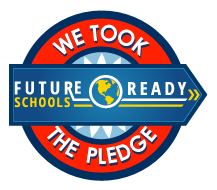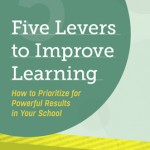“You can choose courage or you can choose comfort, but you cannot have both.”
Brené Brown
From a letter I sent to the DPS109 community today …
At Monday’s Board of Education meeting, BrightBytes Education Research Leader Rob Residori presented the results of the second administration of the 1:1 technology environment survey given to teachers, 4th-8th grade students and parents in March. (The  benchmark survey administration took place in September.) You can view his presentation online.
benchmark survey administration took place in September.) You can view his presentation online.
This year’s focus area for #3 of our “Big 5” (technology) is on the measurement of the impacts of our 1:1 transformative learning environment. As I have published on my blog, our move to 1:1 is about the learning – NOT about the technology per se, or the devices. The BrightBytes research team analyzes impacts on a four-part model called CASE (Classroom, Access, Environment, and Skills). From the fall and spring administrations of the survey we learn what is working, and what needs to work better.
The survey results show that, in general, our students are thriving in the 1:1 transformative learning environment, showing growth in areas such as:
Foundational skills (student basic technical ability grew from “advanced” to “exemplary”)
Multimedia skills (photo, audio, video editing ability)
Student confidence with technology grew from an already high 91% to 95%, meaning that students are very comfortable in their learning environment. In addition, the data shows that teachers have quickly adapted to working in this new innovative learning environment and are eager to grow their skills to  enhance their teaching. Teachers also grew in multimedia skills, as well as in their skills in administering online assessments and using grade-specific software in the classroom.
enhance their teaching. Teachers also grew in multimedia skills, as well as in their skills in administering online assessments and using grade-specific software in the classroom.
Our ability to support the system and those in it also has increased; there was a 33% increase in the number of teachers reporting that the quality of support for problems disrupting instruction is above average. And, we continue to enjoy the support of parents, 45% of whom report that they strongly agree that technology use in class can enhance student learning – and many of whom attended the 1:1 parent workshops in December and March to learn more about how to support their children’s education. In addition, 38% of parents agree that technology use in class can enhance student learning (so 83% of all parents agree or strongly agree).
However, the survey also gave us clear marching orders, and we are ready to follow them! Based on the results of this administration, we know that across the board we need to improve in the area of digital citizenship, which will be a key area of focus throughout the 2015-2016 school year. We want to see growth in areas such as students learning how to act respectfully online:
We already started these efforts by inviting “Raising Digital Native” expert Dr. Devorah Heitner in to run, along with many of our staff members, a day of workshops with all of our 5th grade students. This summer, staff will work to create integrated curriculum on digital citizenship. Next year, parents can expect to hear from teachers directly about what students are learning in class about appropriate online
Thanks to the visionary leadership of the Board of Education and leadership teams, we Engage, Inspire, and Empower all learners every day!



